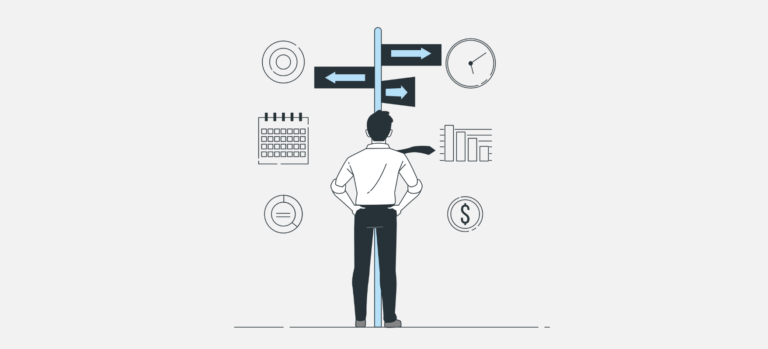How can I collect my BVG assets?
Occupational pension provision, or the 2nd pillar, aims to maintain the standard of living at retirement as a supplement to the AVS. Upon reaching retirement age, insured individuals can choose between a life annuity, a lump-sum withdrawal, or a combination of both, depending on the rules of their pension fund.
A lump-sum withdrawal offers greater flexibility: it allows you, for example, to invest, pay off a mortgage, or plan your estate. However, it also carries risks, notably the challenge of managing your savings over an uncertain lifespan. Before deciding, it’s crucial to understand how much you can withdraw, under what conditions, and the tax and inheritance implications.
How much can I withdraw in capital?
In Switzerland, according to the Federal Law on Occupational Retirement Provision (LPP), every insured person has the right to withdraw at least one quarter of their mandatory retirement savings as a lump sum, regardless of their pension fund’s regulations.
However, some pension funds offer the option of withdrawing more, or even all, of the accumulated capital, provided this is expressly provided for in their internal regulations. This right does not apply automatically to the entire capital.
A concrete example
Mr Dupont reaches retirement age with a pension fund balance of CHF 400,000 (compulsory) and CHF 100,000 (supplementary). By law, he can withdraw at least CHF 100,000 (i.e. 1/4) in capital. If his pension fund regulations so permit, he may also choose to withdraw the entire CHF 500,000.
When can I request a capital withdrawal?
In Switzerland, you can apply for a lump-sum withdrawal from your 2nd pillar mainly when you reach statutory retirement age. The normal retirement age is set at 65 years old for men and 64 years old for women (age 65 for women from 2028, with the AVS 21 reform).
For an early retirement, which typically starts at 58 years old according to most regulations, a lump-sum withdrawal is possible provided that the pension fund allows it.
Others conditions are available to withdraw assets before the normal retirement age:
- Withdrawal for the purchase of a home as a principal residence
- Permanent departure from Switzerland (non-EU/EFTA)
- Starting a self-employed business
Should I withdraw my 2nd pillar capital for retirement?
The temptation to withdraw capital from your 2nd pillar is a natural one. Being free to dispose of your savings gives you a sense of security and autonomy. But it's a decision that deserves careful consideration, as it involves considerable financial stakes.
At normal retirement, the 2nd pillar provides a life annuity calculated with a currently very high conversion rate of 6.8% on the mandatory savings. This means that with a capital of CHF 400,000, you would receive an annual pension of approximately CHF 27,200. Assuming an average life expectancy of 20 years after retirement, this amounts to a total of CHF 544,000 paid out over time. Compared to the initial capital, this represents a gain of CHF 144,000. This “surplus” is significant and hard to replicate through other means: achieving an equivalent return on the financial markets would require about a 36% gain, which is ambitious—especially considering the need for security in retirement.
It’s also important to remember that an LPP pension is guaranteed for life, regardless of market fluctuations or your actual lifespan. By choosing the annuity, you protect yourself against the risk of outliving your savings.
That said, withdrawing the capital can be relevant depending on your personal goals. If you want to pay off a mortgage to reduce fixed expenses, invest in a personal project, or plan an inheritance for your children, the capital offers flexibility that the annuity does not. However, it’s important to carefully assess the impacts—especially tax-related ones—such as the deductibility of mortgage interest if you decide to fully repay a home loan.
How do I withdraw my 2nd pillar?
You must notify your intention to withdraw a lump sum well in advance—several months before your official retirement date. Each pension institution sets its own internal deadlines, but it is common for the formal request to be submitted at least six months before retirement. Missing this deadline may result in losing the right to a lump-sum payment, leaving only the option of receiving an annuity. The spouse’s consent (husband or wife) is required under the LPP.
How is BVG capital taxed?
In Switzerland, capital withdrawn from the 2nd pillar is subject to a capital benefits tax. Upon withdrawal, the amount is taxed at a reduced rate, equivalent to one-fifth of the normal income tax rate. The tax is levied in the canton of residence at the time of payment, based on the statement provided by the pension fund to the tax authorities. For individuals residing abroad, the tax is withheld directly at source in Switzerland.
The amount of tax varies greatly from canton to canton. In Geneva and Lausanne, for example, a withdrawal of CHF 500,000 results in a tax of around CHF 39,000 to 42,000 for a single person. In Valais and Fribourg, the amounts may be slightly lower, but are still substantial. The higher the amount withdrawn, the higher the effective tax rate, due to the progressive nature of the tax scale.
It’s worth noting that voluntary buy-ins to the 2nd pillar, often made to optimize retirement savings, are tax-deductible. However, to keep this benefit, you must wait at least three years before withdrawing the capital, or you risk having to repay the tax deduction.
There are two common strategies for limiting withdrawal tax. The first is to stagger withdrawals over several years in order to benefit from a lower rate each time. The second is to take up residence in a canton with more favorable tax conditions in the year of withdrawal. Some cantons, such as Zug, Schwyz and Obwalden, offer much more favorable conditions than Vaud, Geneva or Neuchâtel.
How can I withdraw my vested benefit capital?
Withdrawing capital from a vested benefits account is possible at normal or early retirement age, in accordance with the terms of your vested benefits contract and within the scenarios defined by the LPP.
To make a withdrawal, you must submit a written request to your vested benefits institution. It is essential to provide all required supporting documents, which vary depending on the reason for the withdrawal. Additionally, it is important to note that vested benefits assets, like those in a pension fund, are subject to capital benefits tax at the time of withdrawal.
Frequently asked questions
No, if you do not make an explicit request within the specified time, the pension fund will pay an annuity. A lump-sum withdrawal must always be expressly requested.
Yes, the BVG provides for a lump-sum withdrawal of up to 1/4 of your retirement capital (compulsory capital). However, some pension funds offer higher benefits.
Yes, if you remain a member of a pension fund after the legal retirement age (e.g. by extending your working life), most regulations stipulate a maximum age of 70. After this age, only the payment of a pension remains possible.
In the event of death before withdrawal, the accumulated capital is paid out according to the order of beneficiaries defined in the institution's regulations, often to the spouse or children. If there are no beneficiaries, the capital is returned to the pension fund.





